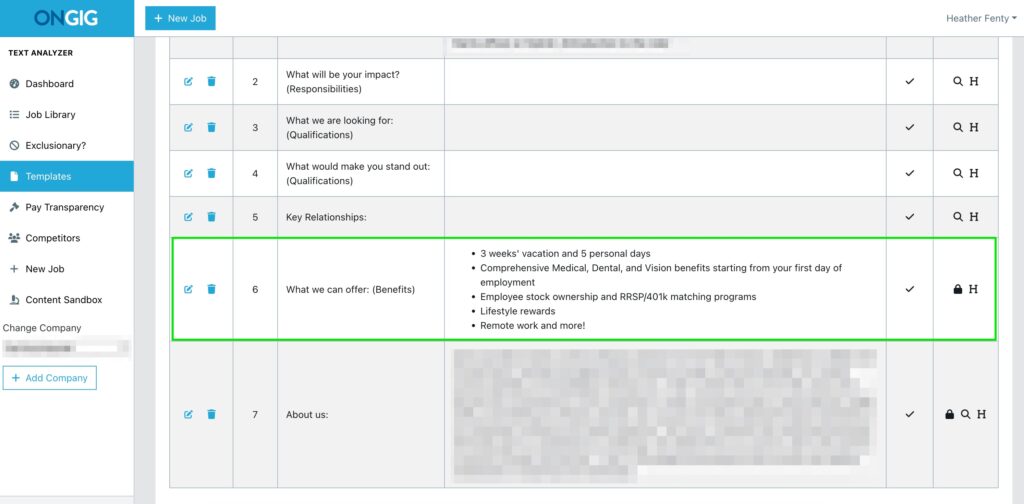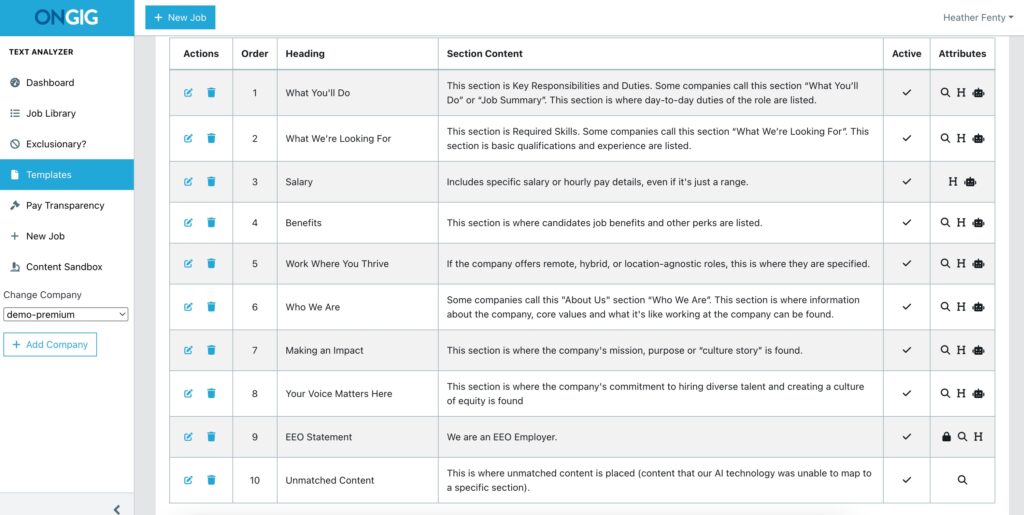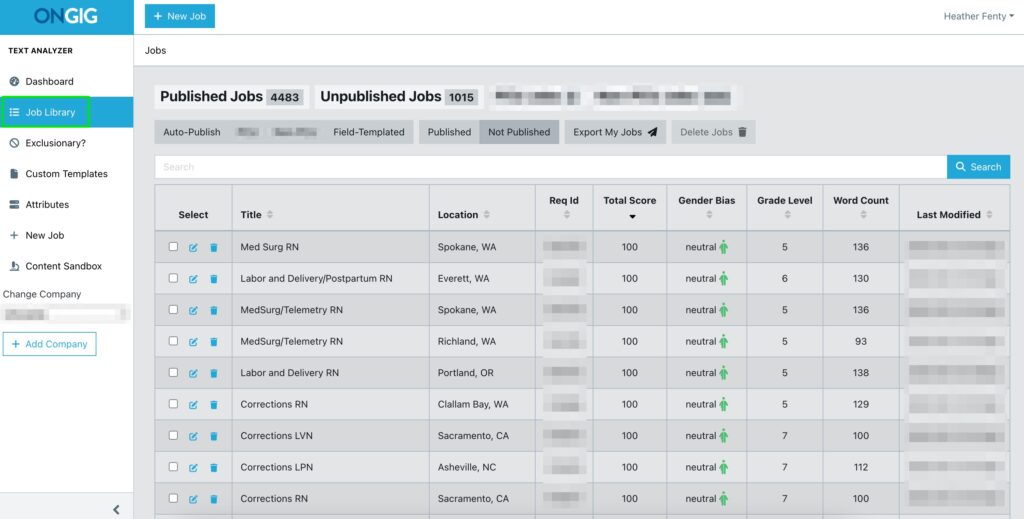- Last Week I Had a Viral LinkedIn Post — But Why? (And What TA Folks Can Learn From It) - December 8, 2025
- Job Description Process Improvement: How One Workflow Fix Saved 1,200 JDs from Chaos - December 4, 2025
- Affordable Job Description Management Software (That Still Do the Job Right) - November 19, 2025
In today’s ever-changing recruitment environment, consistency is key. As companies grow and job descriptions (JDs) evolve, standardizing can ensure clarity and compliance — and streamline the hiring process. In this post, I’ll explore how you can standardize job descriptions effectively, using AI tools and templates that make the process easier and more efficient.
In a recent episode of my The JD Fix podcast, I explore why standardized job descriptions can cut down on your hiring headaches. If you’re looking to hear more about the topic, check out the full episode here:
Why Standardized Job Descriptions Matter
Standardized job descriptions are especially helpful for companies that are growing quickly, scaling globally, or operating in heavily regulated industries like healthcare or finance. When roles expand across regions or need to meet compliance standards, consistency becomes even more critical.
But standardized job descriptions benefit organizations of all sizes. Here are just a few reasons why creating uniform JDs should be a priority for your recruitment team:
- Consistency Across the Organization: Standardizing job descriptions ensures that every role in the company is clearly defined and described in a uniform way, making it easier for hiring managers and HR professionals to align expectations.
- Better Compliance and Classification: A standardized approach helps ensure that your roles comply with industry standards like OFCCP and pay transparency laws.
- Time Savings: When job descriptions are standardized, your team can quickly create new job postings, update roles, and apply changes across multiple departments without starting from scratch every time.
- Reduced Bias in Hiring: Using consistent templates and language helps minimize unconscious bias, leading to more equitable hiring outcomes.
So, how can you create standardized job descriptions and job postings?
Step 1: Choose the Right Template for Standardization
The first step to standardizing job descriptions is to create a template that fits your organization’s needs. A good template should include key components like job title, salary, responsibilities, and more. When designing a template, consider the following:
- Job Title: Keep job titles clear and simple. Avoid using internal jargon that may confuse candidates.
- Key Responsibilities: List the position’s primary duties, focusing on the most important tasks.
- Qualifications and Skills: Define the essential qualifications, certifications, and skills required for the role.
- Physical Requirements & Location: Ensure this information is clear, especially if the role has specific physical demands or location requirements.
- Impact Statement: An impact statement answers the question, “Why does this role matter?” It helps candidates understand the significance of the role in the organization and how it contributes to the broader mission of the company. It’s not just about the tasks — it’s about how the position makes a difference.
- Salary: Be transparent about the salary range. Including salary information upfront helps set expectations and attract candidates who align with your compensation structure.
- Call to Action (CTA): A strong CTA guides applicants on how to apply. Job descriptions should always include a clear, compelling call to action that encourages potential candidates to click apply.
- Company Culture and Values: Include information about your company’s culture and values in job descriptions. This will help candidates decide if they align with your company’s mission and work environment, leading to more engaged employees.
Standardization also plays a big role in your employer brand. When your job descriptions follow a consistent tone and structure, candidates get a clearer sense of who you are as a company — and what it’s like to work with you.
As Kat Kibben points out in a recent webinar, creating a solid job post template is the foundation of building consistency across your organization. Kat emphasizes that a well-designed template ensures uniformity and can be adapted to work with AI tools, making the process more efficient while giving you flexibility as your company evolves.
If you want more of Kat’s insights, check out the full webinar recording below:
Step 2: Automate Bulk Job Description Updates
Managing and updating job descriptions (JDs) can feel like a huge task, especially when your company has a lot of them. The good news is that tools like Ongig’s Job Description Software offer features that make updating multiple job descriptions at once much easier.
Picture this: your company has made some updates to the benefits you offer to new hires. Normally, you’d have to go into each job description and manually make those changes. If you have more than 5 or 10 JDs, that can take a lot of time (weeks even). But with the right tools, you can apply those updates across all your job descriptions in just a few clicks.
For example, whether it’s updating the wording of job responsibilities, adding new qualifications, or adjusting compensation ranges, using automation to make these updates saves hours of work.
And one really helpful feature is the ability to “lock” sections like benefits. After you do a bulk update, locking those sections ensures that the new company-approved language stays consistent across all roles. This way, you don’t have to worry about forgetting to update something or having inconsistent language in different postings:

In short, automation can save your HR team a ton of time and help make sure that every job description stays aligned with your company’s latest standards.
Want a head start? Click below to see how Ongig’s smart job description templates work — and get a live demo of how they can help you standardize and scale. Request a quick demo to see the template in action

Step 3: Create a Centralized Job Description Library
Once you have standardized your job descriptions, it’s important to store them in a centralized, easily accessible repository. This allows anyone in your organization to access the most up-to-date job descriptions and make changes when needed.

A centralized library also helps with compliance and reporting, as you’ll have a record of every job description version for audits or internal reviews.
Plus, many ATS systems can integrate with job description management platforms, ensuring that all job descriptions are stored, updated, synced, and used consistently across platforms.
Step 4: Check for Bias and Keep It Easy to Read
Even if your job descriptions are consistent, they still need to be clear and welcoming. That’s where bias detection and readability checks come in. These tools help you spot stuff that might turn people off, like gendered words, exclusionary language, or jargon that only makes sense internally.
A few examples:
- Swap “aggressive” for “dynamic”
- Replace “digital native” with “tech-savvy”
- Use “stationary” instead of “stand” to be more inclusive to people in wheelchairs
- Say “proficient in English” instead of “native English speaker”
- Spell out acronyms like “CSM” — it could mean Customer Success Manager or Certified ScrumMaster, depending on the context
And readability matters too — shorter sentences, simple words, and bullet points go a long way. If your JD reads like a legal doc or internal memo, most people will just move on.
Tools like Ongig’s Text Analyzer help flag this stuff automatically, so you don’t have to start from scratch every time.
Step 5: Keep It Fresh
Standardizing your job descriptions isn’t a one-and-done kind of thing. Roles change, priorities shift, and language evolves. It’s a good idea to revisit your templates (and your job postings) regularly and see what could use an update.
Ask your hiring managers what’s working (and what’s not), listen to candidate feedback, and monitor how your postings are performing. A little ongoing upkeep can go a long way toward keeping your job descriptions useful and relevant.
Why I Wrote This:
Standardized job descriptions make hiring smoother, faster, and more inclusive. If you’re ready to clean up your process and attract better candidates, we’d love to help. Click over to Ongig to learn how we make standardizing easy with smart templates, bias detection, and more.
